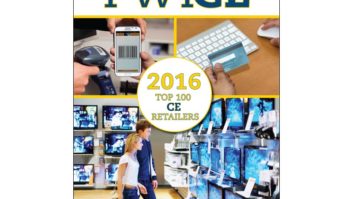Now that founder Dick Schulze has evolved Best Buy into a sprawling, $20 billion retail conglomeration, it falls to vice chairman and newly appointed CEO Brad Anderson to make it all work.
Clearly he’s well-trained to take the top Best Buy job. Following a story book career path, Anderson joined the fledgling CE retailer in 1973 as a sales person and worked his way up to store manager before being named vice president in 1981. Within five years he became executive VP and was elected to the board of directors, and by 1991 was promoted to president and chief operating officer.
Along the way, he was credited with many of the company’s innovations, and will be called upon to come up with many more in order to meet his $100 billion market cap mandate in 10 years.
That target, which management refers to as the “Big Hairy Audacious Goal,” will be attained on a number of fronts, Anderson explained, by building on the current retail foundation with a “whole application of digital products,” he said.
At the forefront will be interconnectivity, be it in the home, in the car or in the workplace. “Building that network will be a key initiative,” he said.
While Anderson believes the smart home or office is still five to seven years away from becoming commonplace, he said Best Buy intends to forge alliances with suppliers like Sony, Microsoft and Yahoo! to develop services and find ways to keep the interface simple and consumer-friendly. “We touch the customer directly,” he said, “and we will add the link between the manufacturers and the customers.”
The second leg of the consumer offering is entertainment, which has experienced “a tremendous increase in availability and can be delivered in numerous ways,” Anderson said. By way of example, he cited XM Satellite Radio and partnerships with film studios that include Best Buy’s forthcoming promotional tie-in for the latest James Bond release.
Other elements of the strategy include customer relationship management (“having the right products in the store,” Anderson said); a seamless integration of e-commerce and physical stores; and new services and subscriptions that can provide recurring revenue and cement consumers to the company.
Also working in Best Buy’s favor are its 20,000-, 30,000- and 45,000-square foot store formats developed for small, medium and large markets; its newly expanded brand stable; and the fact that the digital product cycle is still in its childhood, with DTV just beginning to percolate.
Indispensable in helping Anderson pull together the many elements of Best Buy Co. is what he described as the pervasiveness of information. “Historically, companies were built as top-down organizations. Today, we can effectively use more brainpower throughout the organization to move fast and effectively and bring best practices to bear.”
Further down the road, Best Buy plans to expand its product offering into entirely new areas, although Anderson was guarded on specifics. “As the company continues to move forward, we will define opportunities to create businesses that link back to the consumer,” he said.
As for Best Buy’s international aspirations, a symbolic and telling exchange between Schulze and Anderson said it all when at the close of commemoration ceremonies the founder passed an old office globe to the new chief executive.





